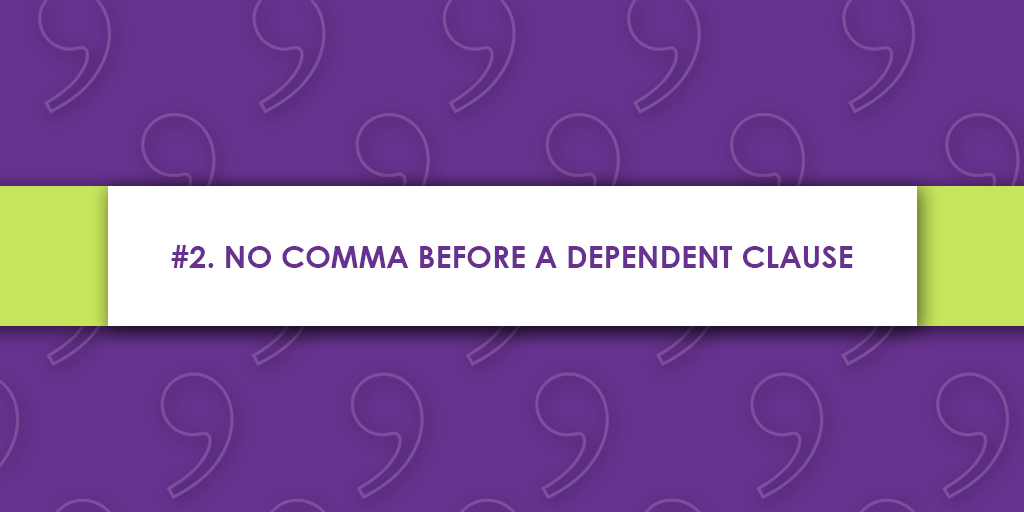Are you sometimes unsure of where to place a comma, or do you feel like you are using them willy-nilly in your posts?
Here are examples of four common errors and tips on how to quickly fix them.

#1 Joining Together Two Separate Sentences
Example:
It’s time for “Focus on the Faculty Friday” and today we will feature #BulldogPride, second grade teacher, Mr. Michael Brown.
What Went Wrong:
This sentence actually contains two comma placement errors. Let’s take a look at the first one! When you join two complete sentences with a conjunction, you must use a comma before the conjunction. The two separate sentences, with their own subject and verb, in this case are:
- It’s time for “Focus on the Faculty Friday.”
- Today we will feature #BullDogPride second grade teacher Mr. Michael Brown.
That means we need a comma before “and” to make the conjoined sentence stylistically correct.
CORRECT:
It’s time for “Focus on the Faculty Friday,” and today we will feature #BulldogPride second grade teacher Mr. Michael Brown.

#2- No comma before a dependent clause
Example:
We found this picture in our 1969 yearbook, and are wondering if any of these students graduated in 1970.
What Went Wrong:
In the first example, we talked about how a comma is necessary between two complete sentences. A comma is INCORRECT if the second part of your sentence is not a full sentence on its own. Here, the second part is: are wondering if any of these students graduated in 1970.
Since this clause does not have a subject (such as “we”), it does not warrant a comma before “and.” The corrected version can be either of the following options.
CORRECT:
We found this picture in our 1969 yearbook and are wondering if any of these students graduated in 1970 OR We found this picture in our 1969 yearbook, and we are wondering if any of these students graduated in 1970.

#3-Overuse of commas with adjectives and names
Example:
Sticking with the same example from our first common error, here is a refresher of the sentence we were looking at:
It’s time for “Focus on the Faculty Friday,” and today we will feature #BulldogPride, second-grade teacher, Mr. Michael Brown.
What Went Wrong:
In this case, we have a lot of commas clogging up the back of the sentence. #BulldogPride is being used as an adjective, therefore we do not need a comma to separate it from the rest of the sentence. Additionally, if we keep the comma after “second grade teacher,” it implies that Mr. Brown is the ONLY second grade educator. If that holds true, keep the comma! If not, which is most likely the case, ditch it and go with either of these variants:
CORRECT:
It’s time for “Focus on the Faculty Friday,” and today we will feature #BulldogPride second grade teacher Mr. Michael Brown OR It’s time for “Focus on the Faculty Friday,” and today we will feature Mr. Michael Brown, #BulldogPride second grade teacher.

#4- Long adverbial at the start of a sentence
Example:
In honor of the varsity football home opener tomorrow we want to share a photo of some of our football players from 1998.
What Went Wrong:
If you are going to begin a sentence with a long phrase, such as “in honor of the varsity football home opener tomorrow”, you are obligated to put a comma after it to separate it from the rest of the sentence and create a visual pause.
CORRECT:
In honor of the varsity football home opener tomorrow, we want to share a photo of some of our football players from 2000.
Still in need of a bit of help with fine-tuning your comma-placing skills? Here is a link to an article covering more comma issues.
Hopefully, you will take a minute when reading over your posts to check and see that you only have commas where necessary. Paying attention to the little things leads to representing your school in a professional manner, which is something we all strive for!
A guest post from Hannah Feller, our youngest account manager! She is currently completing the BA program in English Literature and Linguistics at the University of Groningen in the Netherlands. She is thrilled to be able to apply the theory she works with at university to social media for schools.


